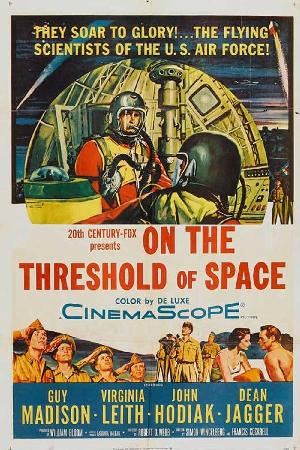
On the Threshold of Space (1956)
- 6.9
- 98 mins
- Adventure
Storyline
During the 1950s, with the advent of faster jets and bombers that could fly higher, the problem of a safe bail-out system arises. Also, a looming space-race against the Soviets forces the U.S. Air Force to design and test ejection systems that could be used in experimental planes or future spacecraft. Can a human withstand the blunt physical forces at play during an ejection from a high-flying aircraft and also during the rough descent toward the earth ? That's where aerospace medicine comes-in. Capt. Jim Hollenbeck, a doctor working for the space branch of the United States Air Force Medical Corps, is sent to Sovern Air Force Base in Florida to test a faulty experimental ejection seat. A series of tests and evaluations at supersonic speed follow. The head of the program, Dr. Hugh Thornton, also tests a rocket sled launched at 1,000 miles per hour to evaluate the human-body endurance and recovery. Capt. Jim Hollenbeck is asked to test a balloon gondola designed to carry a human 20 miles up into the stratosphere. From a height of 100,000 feet, the test-pilot parachutes down to earth in a spherical capsule. Being at the threshold of space this experiment could provide the basis for sending a man into space. The new officer in charge of the program, Maj. Ward Thomas, is a more cautious man who doesn't want any mishaps or fatalities that could jeopardize the whole program. After many trial-and-error experiments, Washington D.C. authorizes a floating high-altitude platform. Thus, a test-pilot could evaluate the survivability of such an ascent and eventual parachuted-descent to earth. To the horror of his new wife, Pat, Capt. Jim Hollenbeck volunteers for the immensely dangerous test.—nufs68
Plot Keywords
hairy chest, air force base, bare chested male, parachute, man wears a swimsuit, scientific research
Short Review
filmed in 1955 in Destin Florida at Shoreline Hotel
Trailer
Streaming Service
1. Amazon Video : Rent from $1.99, Or $0.00 with a Prime membership
